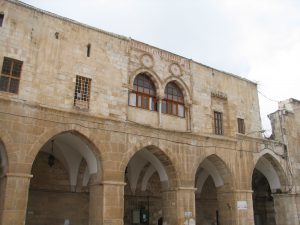The original meaning of Ribat is to reside in a place without leaving it. In Arabic, “rabata” means, he resides in the same place without leaving. Hence, Ribat is known to reside particularly in the border weak hiatus areas (Thughur) which are threaten to be attacked by the enemies in order to strengthen, protect and defend the Muslims. Ribat has an enormous virtue in Islam, it is one of the forms of jihad for the sake of Allah. The messenger of Allah said, “Observing Ribat for a single day is far better than the world and all that it contains. A place in Jannah as small as the whip of your horse is far better than the world and all that it contains”[1].
Since the first century AH / 7th AD, Muslims have been accustomed to stay at al-Aqsa Mosque, so that a large number have left their homes and migrated to Jerusalem (al-Quds) to perform Itikaf [a retreat inside the mosque for the sole purpose of worship and devotion to Allah] in Al-Aqsa and to be buried after passing away in its vicinity. Probably, the companions Shaddad ibn Ous (64 AH / 683 AD) and Thu al-Asabi’a were the first cited examples of companion who moved to reside adjacent to al-Aqsa Mosque. the companion Thu al-Asabi’a was inspired by the Prophet’s words and moved to live near to al-Aqsa. He said “I asked the Prophet (pbuh), “O Messenger of Allah, if we were to stay somewhere after you, were do you command us?” The Prophet said, “Stay in Bait al-Maqdis so that if you have progenies, they’d go to the mosque”[2] Even after them, Ribat and Itikaf have never stopped in al-Aqsa over the next centuries except the era of the Crusades when the entire mosque was occupied and converted to church and hostel for the Crusader soldiers. The books of history, mysticism and biographies contain many signs of those who lived in al-Aqsa and devoted themselves for worship and observing Itikaf.
[1] Narrated by Muslim
[2] Narrated by Imam Ahmad

